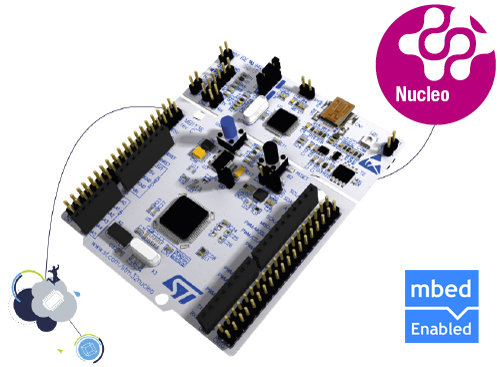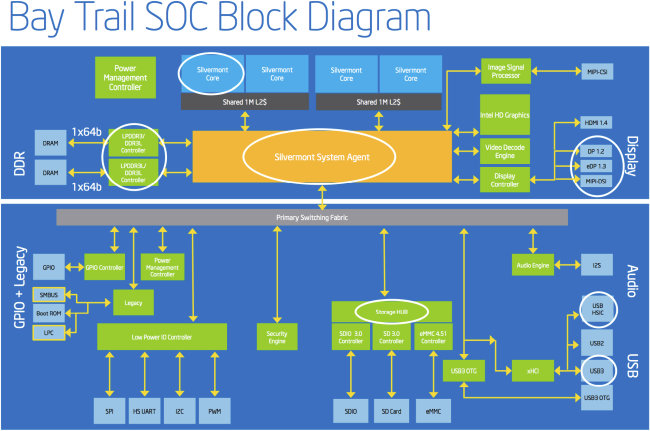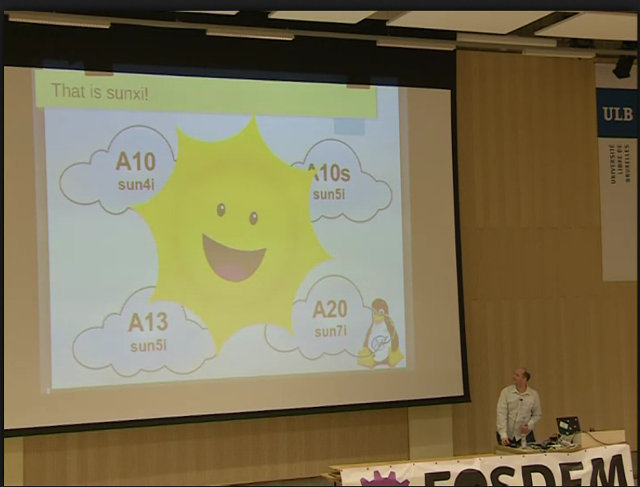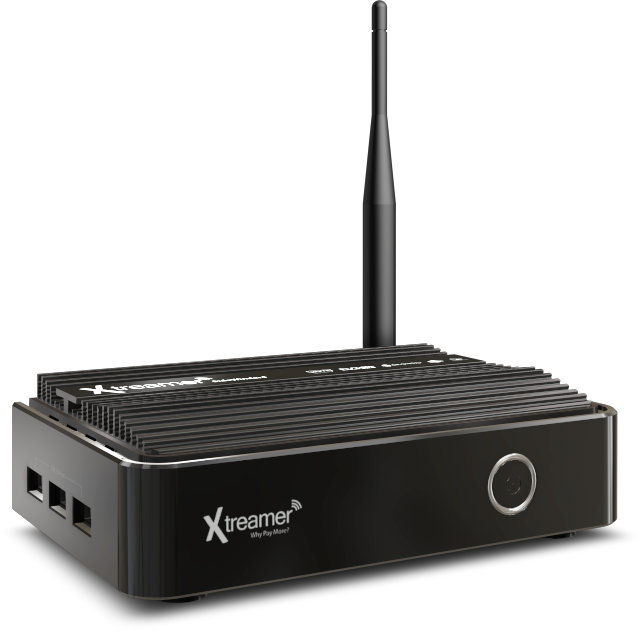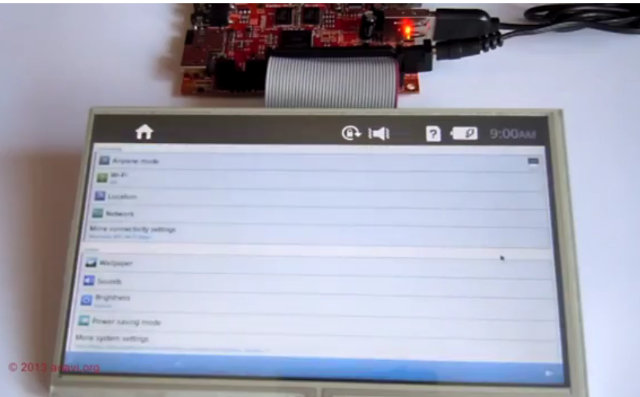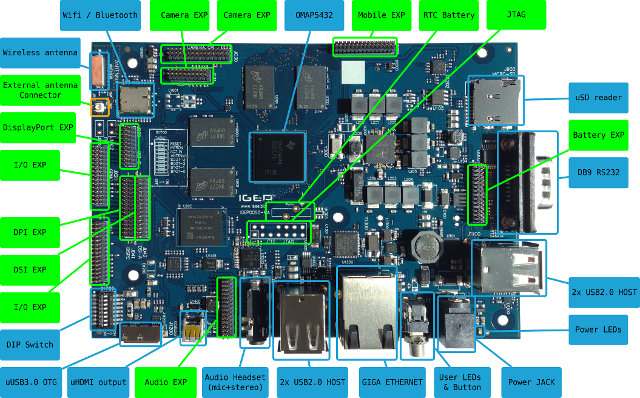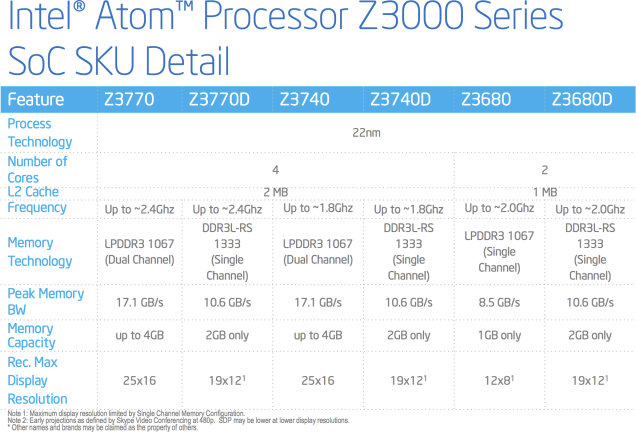STMicro already announced a $24 NFC development kit a few days ago, and they’ve now announced new ultra low cost STM32 development boards. STMicro Nucleo development boards are based on different STM32 MCU based on ARM Cortex M0, M3 and M4, feature Arduino headers, and are supported by mbed platform. There are currently four boards available: NUCLEO-F401RE – Based on STM32F401RET6 ARM Cortex M4 MCU @ 84 MHz with 512KB flash memory, 96 KB SRAM NUCLEO-F030R8 – Based on STM32F030R8T6 ARM Cortex M0 MCU @ 48 MHz with 64KB flash memory, 8KB SRAM NUCLEO-F103RB – Based on STM32F103RBT6 ARM Cortex M3 MCU @ with 128KB flash memory, 20 KB SRAM NUCLEO-L152RE – Based on STM32L152RET6 ARM Cortex M3 MCU @ 32MHz with 512KB flash memory, 32KB SRAM All four boards share the following specifications: STM32 microcontroller with LQFP64 package Two types of extension resources Arduino Uno Revision 3 connectivity STMicroelectronics […]
Intel Bay Trail Graphics Overview – FOSDEM 2014
Bay Trail SoCs are new low power Intel ICs for tablets (Bay Trail-T, Z3000 series), mobiles (Bay Trail-M, N2800, N2900 and N3500 series), desktops (Bay Trail-D, J1800, J1900 and J2900 series) and embedded / industrial platforms (Bay Trail-I, E3800 series). Many Atom processors used to features PowerVR GPU, but it has now been replaced by Intel HD graphics in Bay Trail SoC. Jesse Barnes, working at Intel on software and drivers for Intel graphics devices, gives a presentation about Bay Trail SoCs with a focus on graphics. After an overview, and some ARM bashing regarding performance (Nvidia Tegra 4 and Qualcomm Snapdragon 800), and even power consumption (Tegra 4 only), he describe further details about Intel HD graphics found in the new Intel processors. Everything is basically in mainline, and you’ll need Linux 3.10 or greater, Mesa 9.2 or greater, and libva 1.2.1 or greater for proper support. Some initial […]
AllWinner Linux-sunxi Community Presentation and Status Report – FOSDEM 2014
Oliver Schinagl, a member of linux-sunxi community working on open source kernel and bootloader for AllWinner SoCs, has given a presentation of the community at FOSDEM 2014 to give an overview, and show what progress has been made to date. I’ll write a summary in this post, but if you want to watch the video and/or access the slides scroll down at the bottom of the post. After explaining what sunxi is, and introducing himself, he gave some information about AllWinner and their SoCs: Founded in 2007 in Zhuhai, Chiang now with 550 employees including 450+ engineers 15% market share in 2013 for tablet SoCs, only behind Apple. Products: F-series SoC (2010), A10 (2011), A13, A10s (2012), and A20 (2013). (cnsoft He skipped A31(s) and A80 here as they are not really supported by the community). They list “Open Source Source” and “GPLv3” in their marketing materials although they clearly […]
Xtreamer SideWinder4 is an XBMC Android TV Box with a DVB-T2 Receiver, and Google Cast Support
Xtreamer, a Hong Kong based company specialized in digital media products, is now taking pre-orders for Xtreamer SideWinder4, an Android media player powered by AMLogic AML8726-MX dual core processor, featuring a DVB-T2 receiver, and pre-loaded with XBMC and Cheapcast Chromecast emulator. Let’s get right to the specs: SoC – AMLogic AML8726-MX dual core ARM Cortex A9 @ 1.5GHz with Mali-400MP2 GPU System Memory – 1GB DDR3 Storage – 8GB NAND Flash (32M bit nor flash + 32Gbit MLC flash), micro SD card slot Video Output – HDMI 1.4 Audio Output – HDMI 1.4 + optical S/PDIF. Dolby & DTS 2ch output, 5CH & 7CH pass-through Connectivity – 802.11 b/g/n Wi-Fi with AirPlay, Miracast and DLNA support, 10/100M Ethernet USB – 3x USB 2.0 host ports Power Supply – DC 5V, 2A power adapter (CE, FCC, CCC certified) Dimensions – 18 x 8.2 x 3.5cm The device runs Android Jelly […]
How to Build and Run Tizen 2.0 on AllWinner Boards – FOSDEM 2014
Leon Anavi has spent some time building and running Tizen for Olimex A10s-OLinuXino-MICRO board based onAllWinner A10s cortex A8 processor, and gave a short presentation at FOSDEM 2014 showing the main steps involved in the project. The final result is basically a non-portable Tizen tablet with a main board connected to an LCD display. If you have an LCD screen, you could also use a monitor (VGA/HDMI) instead. After a short description of the hardware, and explaining it should also work on other AllWinner platforms such as Cubieboard, Leon gave a few no-nonsense recommendations he learned from his mistakes: Get a USB serial board for debugging Use recommended accessories from the manufacturer such as power supply or LCD display to make development easier Buy a board that can boot from micro SD or SD card, again for ease of development If something does not work… Restart the board! 🙂 In […]
Applied Micro X-Gene X-C1 ARMv8 Server Development Board is Now Available for Pre-order
Applied Micro X-Gene is the very first processor to use ARM 64-bit architecture (ARMv8), not Cortex A53 or Cortex A57, but a custom implementation, and last year we’ve seen the company’s ARMv8 development board running 4 Linux virtual machines via KVM. The platform, called X-Gene X-C1, can now be pre-ordered to develop private cloud, public cloud, and enterprise applications. There’s limited public information for now, but I could derive specifications from a few places on the web and available pictures: SoC – Applied Micro X-Gene eight core ARMv8 processor @ 2+GHz System Memory – 2x DDR3 memory slots Storage – 4x SATA 2/3 ports + SD card slot Connectivity – 3x 10 Gb Ethernet ports USB – 2x SuperSpeed USB 3.0 ports, 1x mini USB port Expansion – PCIe Gen 3 Monitoring DB9 Serial port Power – ATX I don’t know what’s the metallic connector with holes between the two […]
IGEPv5 OMAP5432 Development Board is Now Available for 149 Euros
ISEE IGEPv5 development board announced in October 2013, and powered by Texas Instrument OMAP5432 dual core Cortex A15 + dual core Cortex M4 SoC, POWERVR SGX544MP2 and Vivante GC320 GPUs is now available for as low as 149 Euros. There are two versions: “IGEPv5 OMAP5432 Communication Edition” for hobbyists with limited support, and “IGEPv5 OMAP5432” directly supported by ISEE. There’s also “IGEPv5 Custom Design” if you have specific requirements for your product. Hardware specifications are shared by both versions but with significant differences (CE = IGEPv5 OMAP5432 Community Edition, ISEE = IGEPv5 OMAP5432): SoC – Texas Instruments OMAP5432 dual core Cortex A15 up to 1.5 GHz (CE) or 2 GHz (ISEE), dual core Cortex M4, with POWERVR SGX544 dual-core GPU, Vivante GC320 GPU, and TMS320DMC64x DSP System Memory CE – 1GB DDR3 @ 1066 MHz ISEE – Up to 4 GB DDR3 RAM expandable to 4GB Storage CE – No eMMC, […]
Intel Bay Trail Z3700 Series Overview, Benchmarks, Hardware, Documentation and Linux Support
After seeing the discussion about ARM vs x86 (Bay trail) for the future Dragon Pyra open source game console, I’ve realized many people, including myself, do not know about the different resources available to develop hardware and software for Intel Bay Trail SoCs for tablets such as Atom Z3740 and Z3770, so I decided to have a look. Intel Atom Bay Trail Z3700 Series Overview Intel Z3600 series and Z3700 series are respectively dual core and quad core Bay Trail-T SoCs for Android and Windows 8 tablets. There are 4 quad core models: Z3740, Z3740D, Z3770, and Z3770D, and 2 dual core processors: Z3680 and Z3680D. The dual core versions are reserved for Android only, and there’s no product page on Intel for now, so I’ll focus this post on Z3700 series only. I have no idea what the “D” in Z3740D is for, except it;’s not related to Desktop, […]


